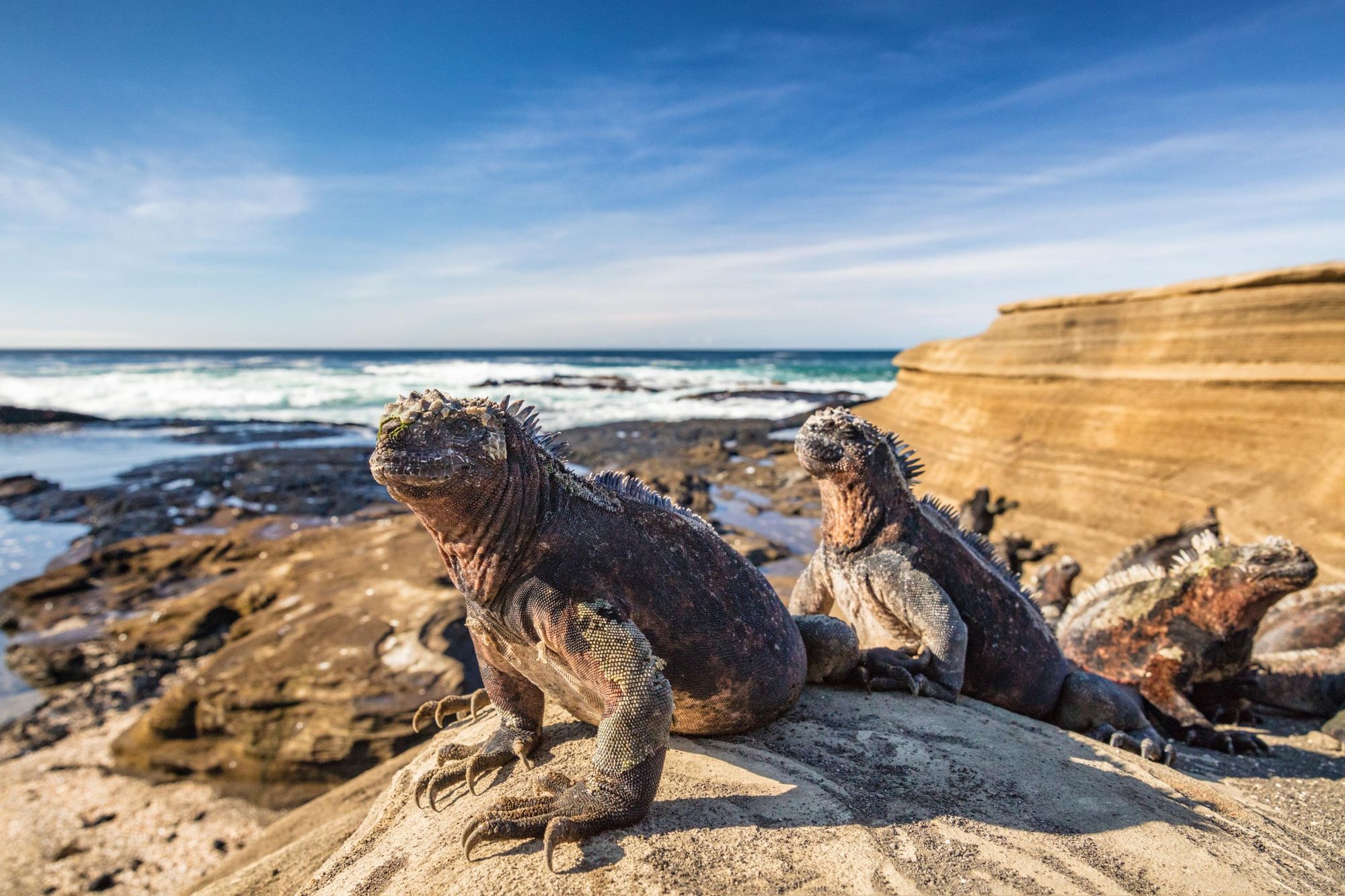The Galapagos Islands are legendary for their wildlife. “You’ll see wildlife even if you don’t do any specific activity,” says Henry Sisa, a Quito-based guide who has led tours in Galapagos. “Wildlife is all around you here. Even when you’re just walking the streets or strolling along a beach, you’ll find that animals will cross your path.”
“You can also do other activities of course, such as cycling, hiking and kayaking. One of the best ways to see marine wildlife is snorkelling, and if you go island hopping, it allows to do more activities and head out on longer treks.”
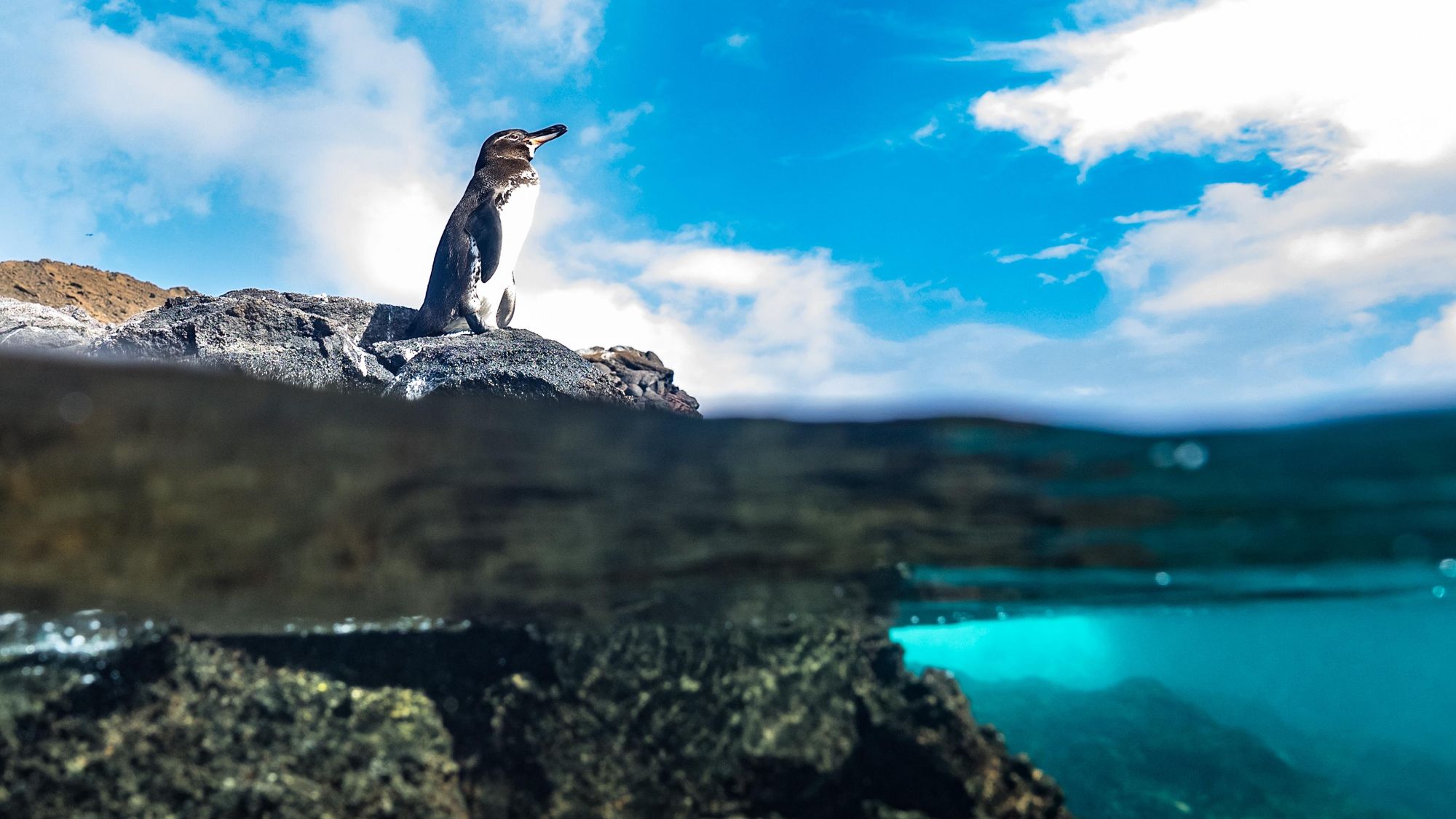
Wilson Herrera is another Quito-based, Ecuadorian guide who works frequently around the Galapagos Islands. “It’s a dynamic region constantly changing with volcanic eruptions,” Wilson says. “The islands are home to a strange, fascinating collection of creatures.”
We caught up with Wilson Herrera and Henry Sisa, two certified destination experts, to get their tips for the best things to do in the Galapagos Islands.
Where are the Galapagos Islands?
“The Galapagos Islands are officially named the Archipelago of Colon,” says Wilson. “They’re located over 1000km from the Ecuador mainland and consist of 13 main islands, about nine minor islands, 39 islets and some 600 ocean rocks.”
11 of the Best Things to Do in the Galapagos
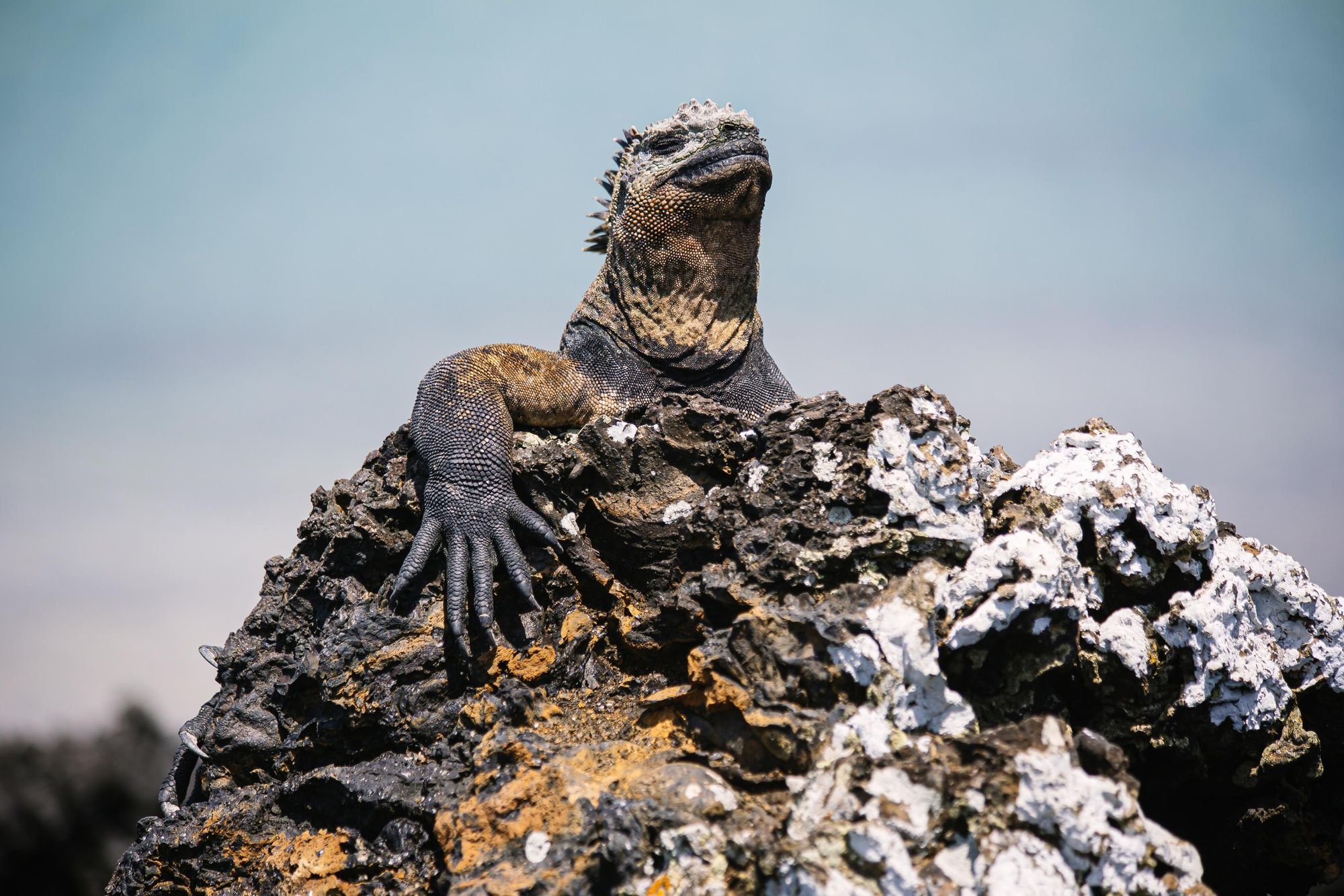
The wildlife watching in the Galapagos Islands is legendary. Travel around the island and you can see everything from iguanas and sea turtles to reef sharks and blue-footed boobies. Of course, there's more than one way to see all that wildlife, and to explore the islands. We're going to delve into all of that with the experts now. Here are Wilson and Henry's tips for the best things to do in the Galapagos.
1. Watch the wildlife, including the iconic Giant Tortoises
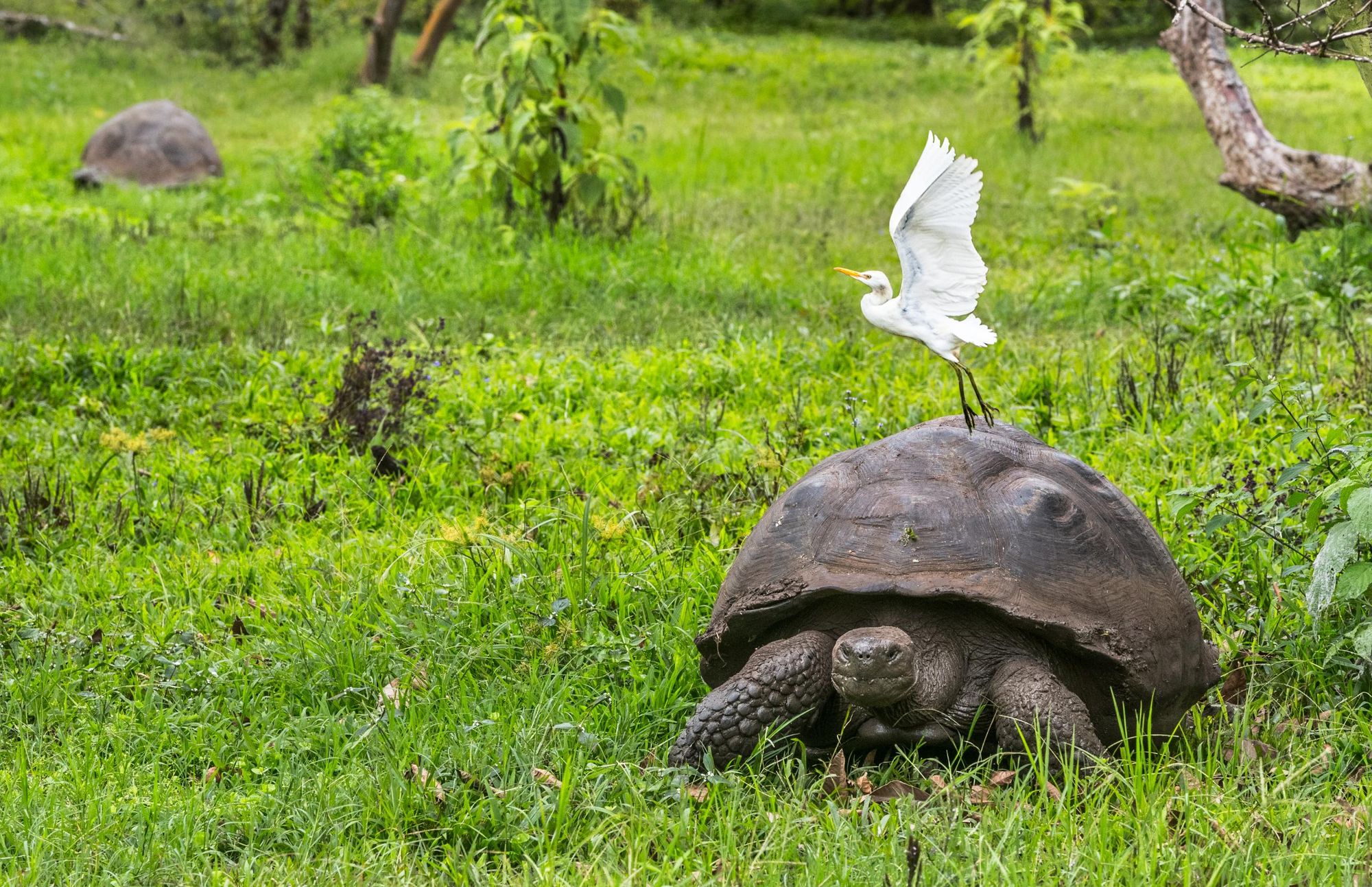
“Wildlife observation is the main reason why so many people choose to visit the archipelago,” says Wilson. “Nowhere else can we observe animals so closely and calmly. Galapagos’ wildlife provides a fantastic opportunity to see their daily lives.”
The species range from penguins and blue-footed boobies to iguanas, albatross and the most famous animal on the islands, the Galapagos giant tortoise.
“The Galapagos giant tortoise is the most well-known species in the Galapagos Islands,” says Wilson. “Galapagos offers the visitors to see these amazing creatures in the wild. They can weigh up to 550 pounds and live for 150 years or more, easily passing 100. But while it is the longest living vertebrate and one of the largest reptiles in the world, it is also one of the rarest.
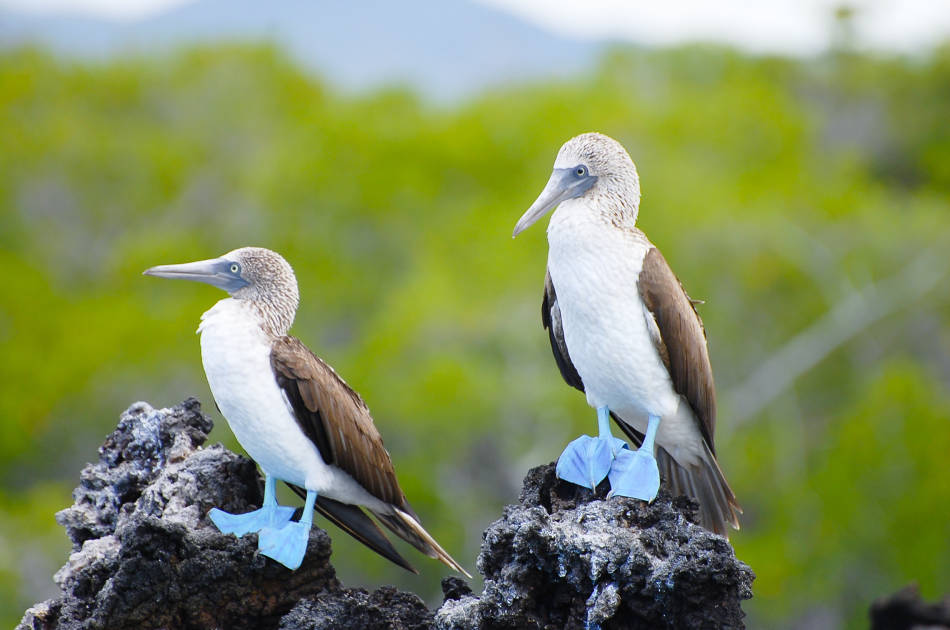
“Giant tortoises once covered much of the world, inhabiting every continent other than Antarctica and Australia. Now only two groups of a few thousand roam the world today - one in the Galapagos Islands and one in the African archipelago of Seychelles.
“You can observe these huge, magical creatures in their natural habitat at one of three ranches, including one located in the highlands of Santa Cruz. It’s really worthwhile.”
Henry adds: “One of the best ways to see marine wildlife is through scuba diving, but you don’t have to dive to see animals. Walking around, you’ll find lots of animals and if you’re snorkelling, you have a chance to play with some of those animals. Sea lions come around you, and you’ll see lots of penguins. It’s like a paradise here on earth.”
2. Visit San Cristobal for sea lions
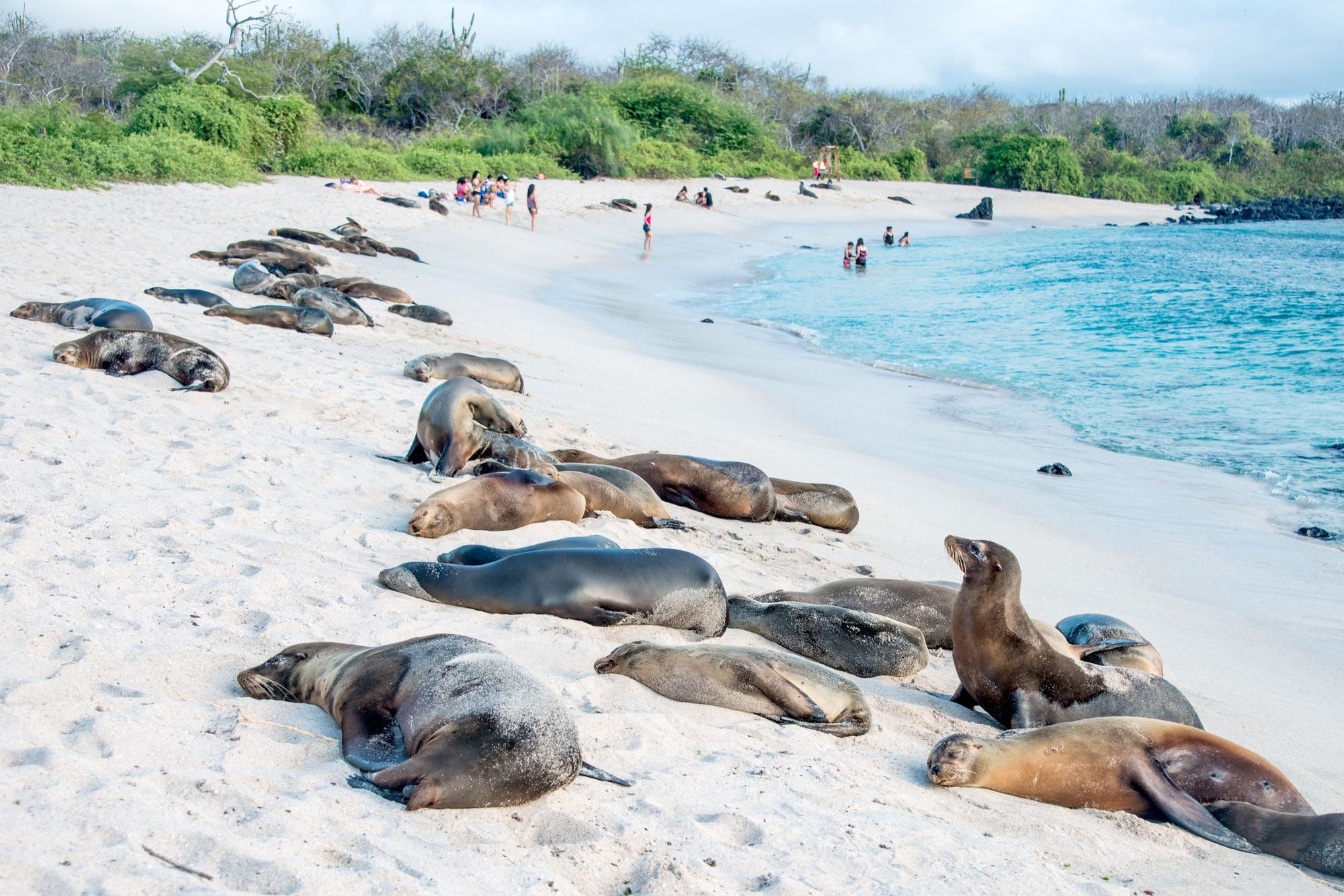
Also known as Chatham island, San Cristobal is the easternmost island in the Galapagos.
“San Cristobal is called the Sea Lion Island,” says Henry. “There are so many sea lions. You have to move sea lions from the tables just to sit down for a meal. It’s incredible.”
The island is home to Puerto Baquerizo Moreno, the capital of the Galapagos.
“There are only 7,000 people here and it's just an amazing place,” Henry says. “It’s where you’ll find the marine iguanas; the only iguana on earth that is able to spend more than 40 minutes underwater. They have evolved their way of eating plants to be able to go underwater and see algae. There are marine iguanas on every island but in San Cristobal they are a little bit reddish - while on Isabela they are a darker colour.”
3. Walk through the Lava Tunnels
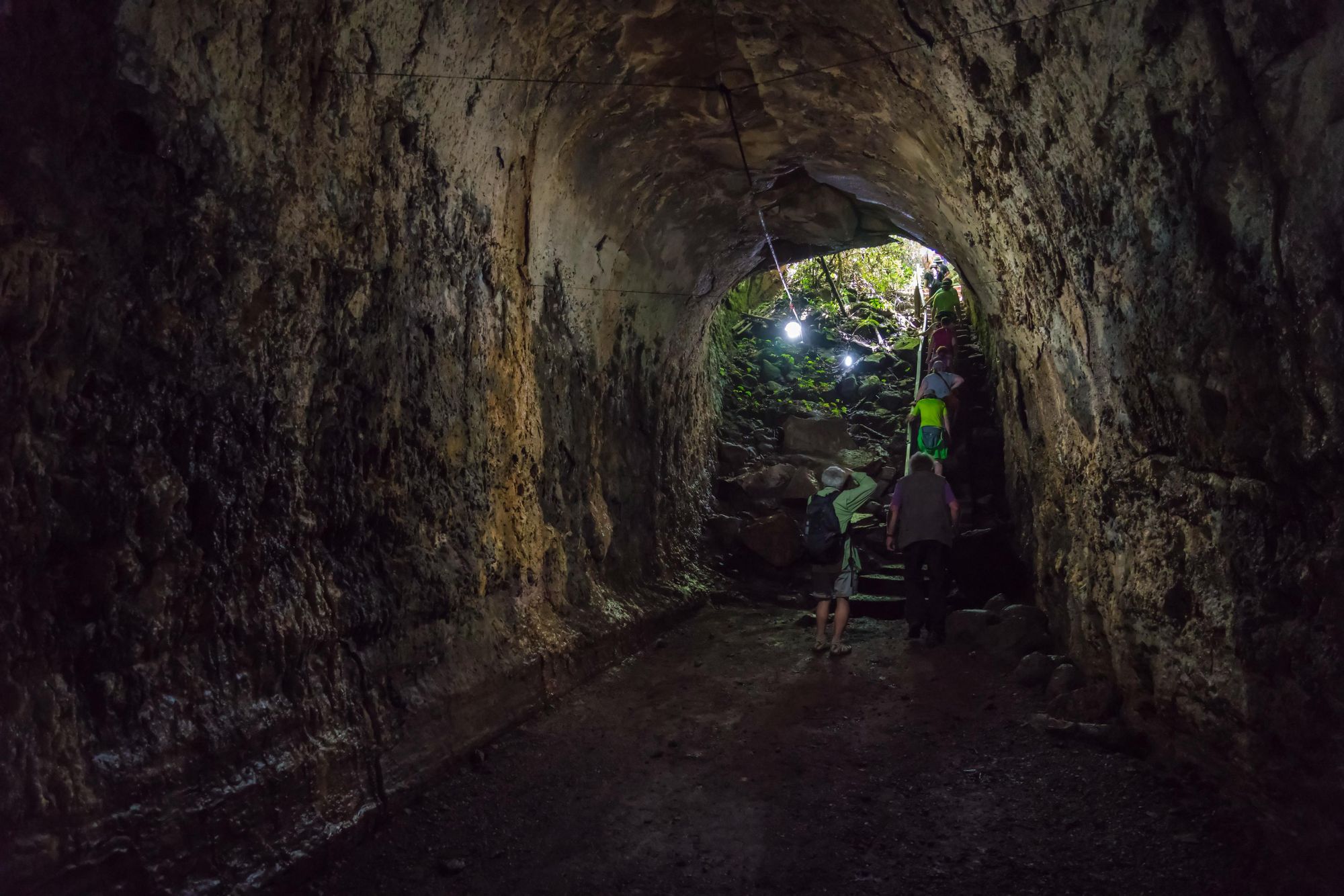
“Located at the same place where you can see giant tortoises on Santa Cruz, you'll find lava tunnels, formed when molten lava flowed through underground channels million years ago, leaving behind awe-inspiring tunnels that are now a popular tourist attraction,” says Wilson. “You can visit these tunnels with your tour guide, and be sure to bring a flashlight. If you are looking for an unforgettable experience during your time in the Galapagos, check out the Lava Tunnels.”
4. Snorkel in the Waters of Concha Perla or Tortuga Bay
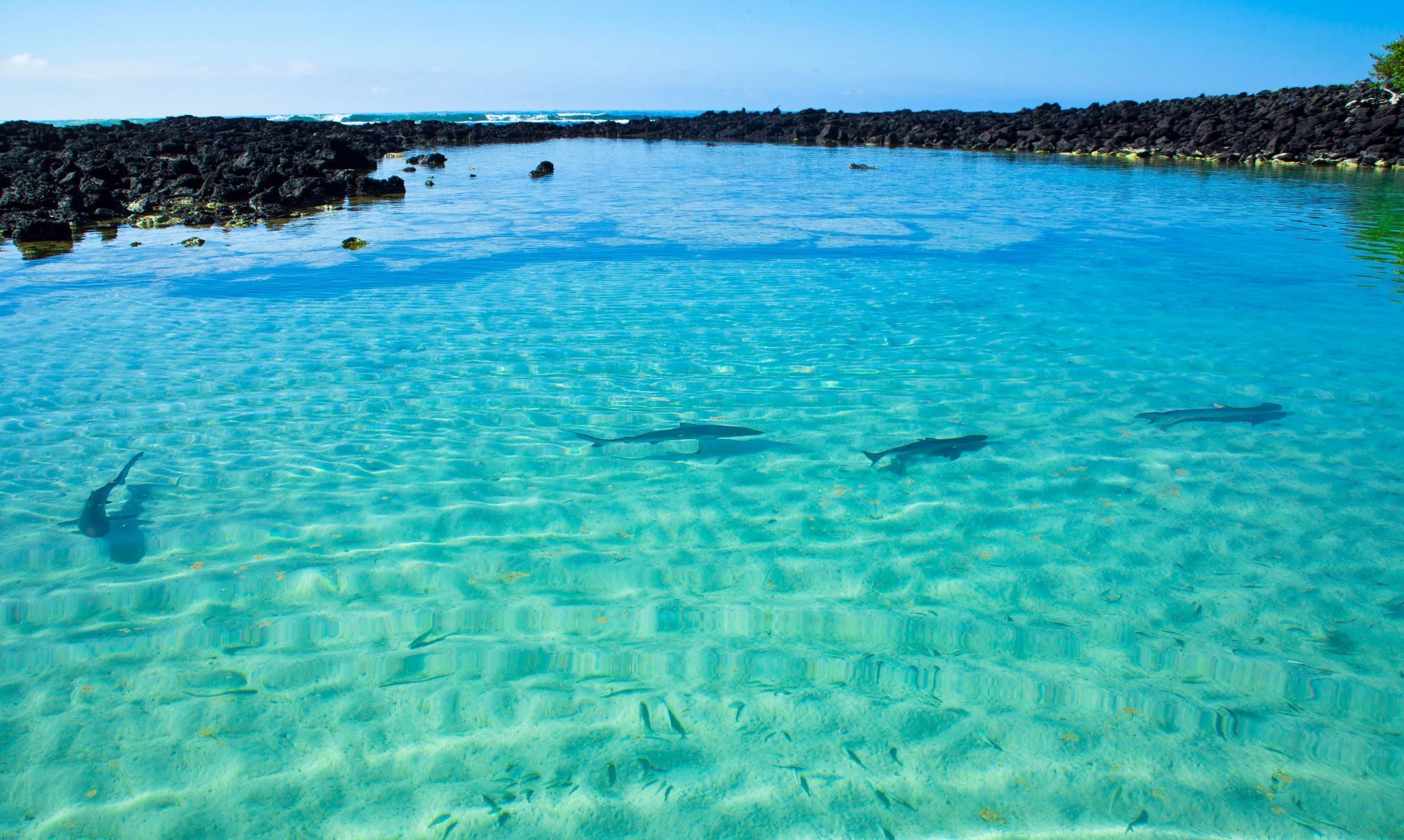
“There are two incredible ways to discover animals in the Galapagos,” says Henry. “One is walking and the other is snorkelling, because half of the wildlife is marine.”
The oceans around the Galapagos are as vibrant as the land. Go snorkelling and in or around the bright coral reefs you may be lucky enough to spot manta rays, reef sharks, scorpion fish, pencil sea urchins, yellow-tailed grunts and an array of other fish. But where to go snorkelling?

“Concha Perla is a sea bay surrounded by volcanic rocks that becomes a natural fish tank to enjoy hours of snorkelling with colourful fish, sea lions,” says Wilson. “Depending on the tide, there are times when rays, sea turtles and whitetip sharks are trapped in this natural fish tank and the sharks choose the lava tunnel that is surrounded by mangrove as a resting place.”
Other great spots for snorkelling in Galapagos include Tortuga Bay and the waters around Islote las Tintoreras, a chain of islands named for the white-tipped reef sharks that live there.
5. Visit the Charles Darwin research station
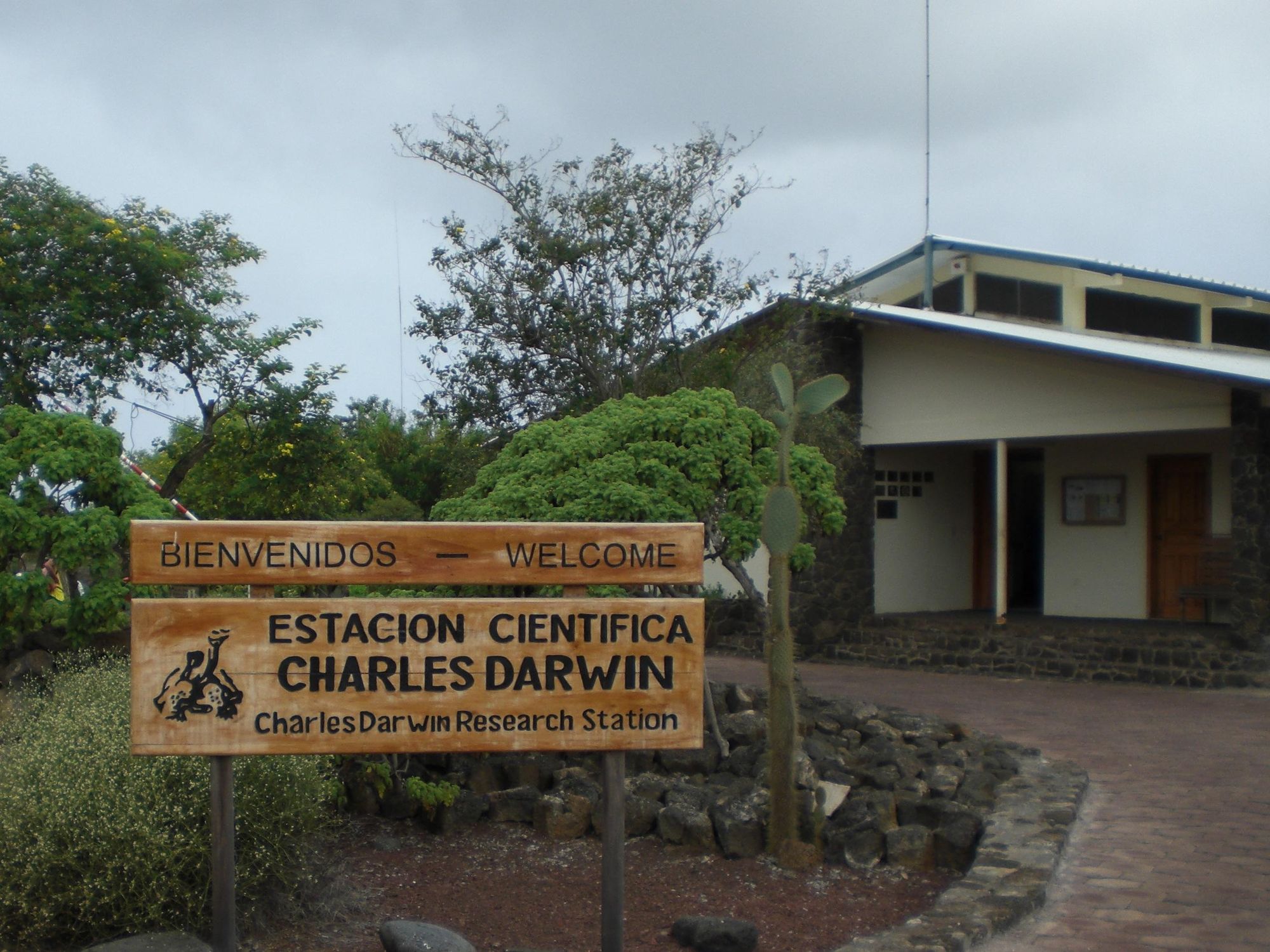
One name above all else is associated with the Galapagos Islands: Charles Darwin.
It was in 1831 on HMS Beagle that Darwin set sail for the Galapagos. While he was on the islands, he noticed that, while animal species were similar from island to island, they had also evolved in different ways, in order to best adapt to their environments. This realisation lay the basis for his theory of natural selection, and for his 1859 work ‘On the Origin of Species’ which would transform the scientific view on the biological origins of life on planet Earth.
The Charles Darwin Research Station can be found in Puerto Ayora, on Santa Cruz Island. It opened in 1959 and is run by the Charles Darwin Foundation.
“Travellers can visit the Darwin research to deepen and broaden your knowledge,” says Wilson. “Inside, you’ll find a fascinating interpretation centre and can wander through the tortoise breeding program facilities. Here, we observe giant tortoises and learn how they vary from island to island. We also explore some volcanic terrain that hugs the coastline and forms the foundation for many unique wildlife habitats while learning about many endemic and native species in the Galapagos.”
6. Cycle to Garrapatero beach on Santa Cruz Island
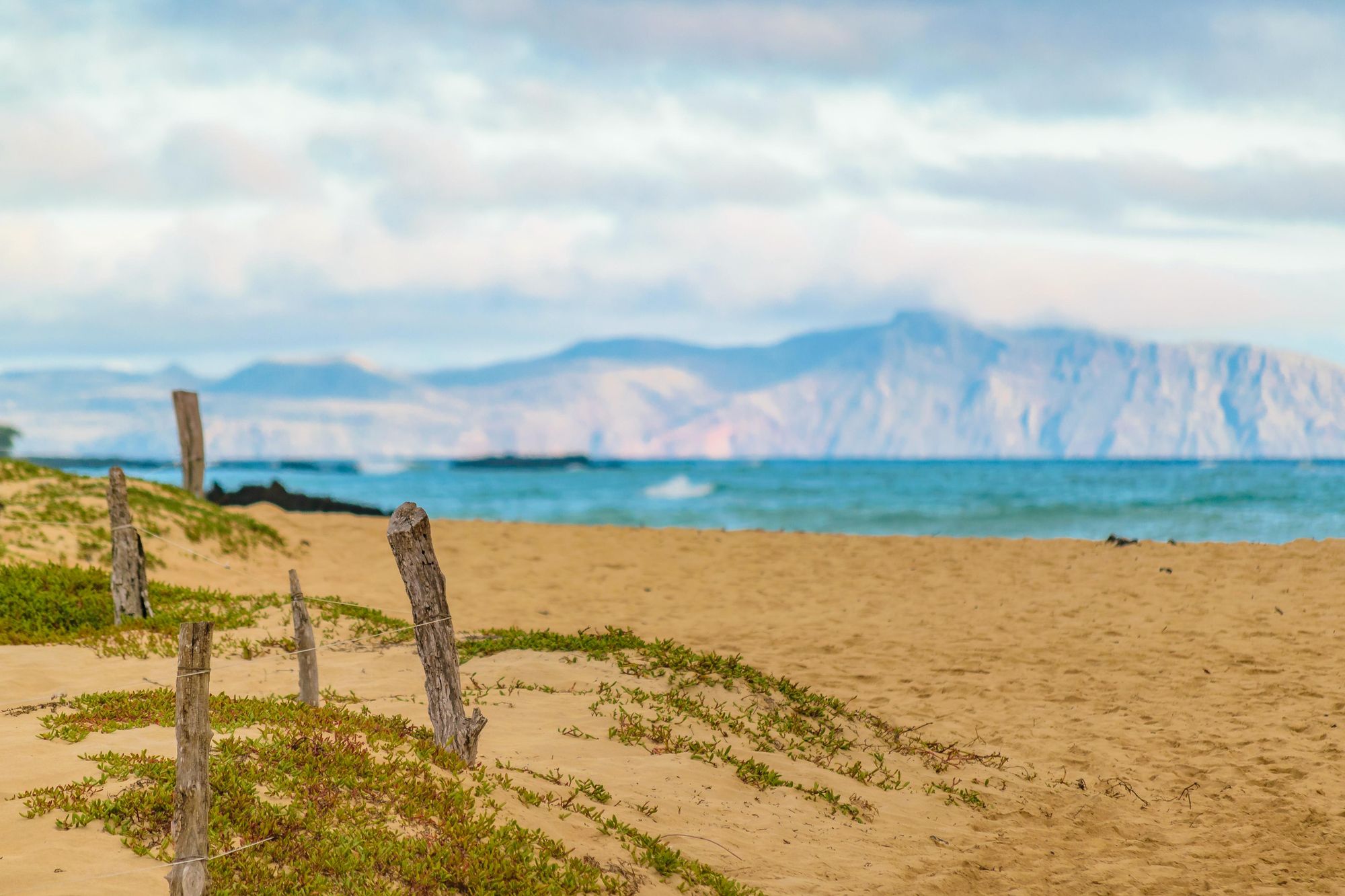
Santa Cruz island is the most populous and second-largest island in the Galapagos Islands. It’s home to beautiful beaches, great cycling trails and the Cerro Mesa Nature Reserve.
“Garrapatero Beach, located on the eastern side of Santa Cruz Island, is considered to have the finest sand in all the Galapagos,” says Wilson. “Here you can enjoy activities like birdwatching, swimming, and kayaking. Relax on the beach, or walk to a brackish lagoon home to stilts, plovers, pintails, and flamingos.

“You can get to the beach by taxi or by cycling with your tour guide. What better place to enjoy a cycle than on Santa Cruz Island? There are beautiful views, no traffic and unique animals on either side of the path. Easy downhill paths lead to easy walks to the beach.”
7. Walk and kayak on Tortuga Bay
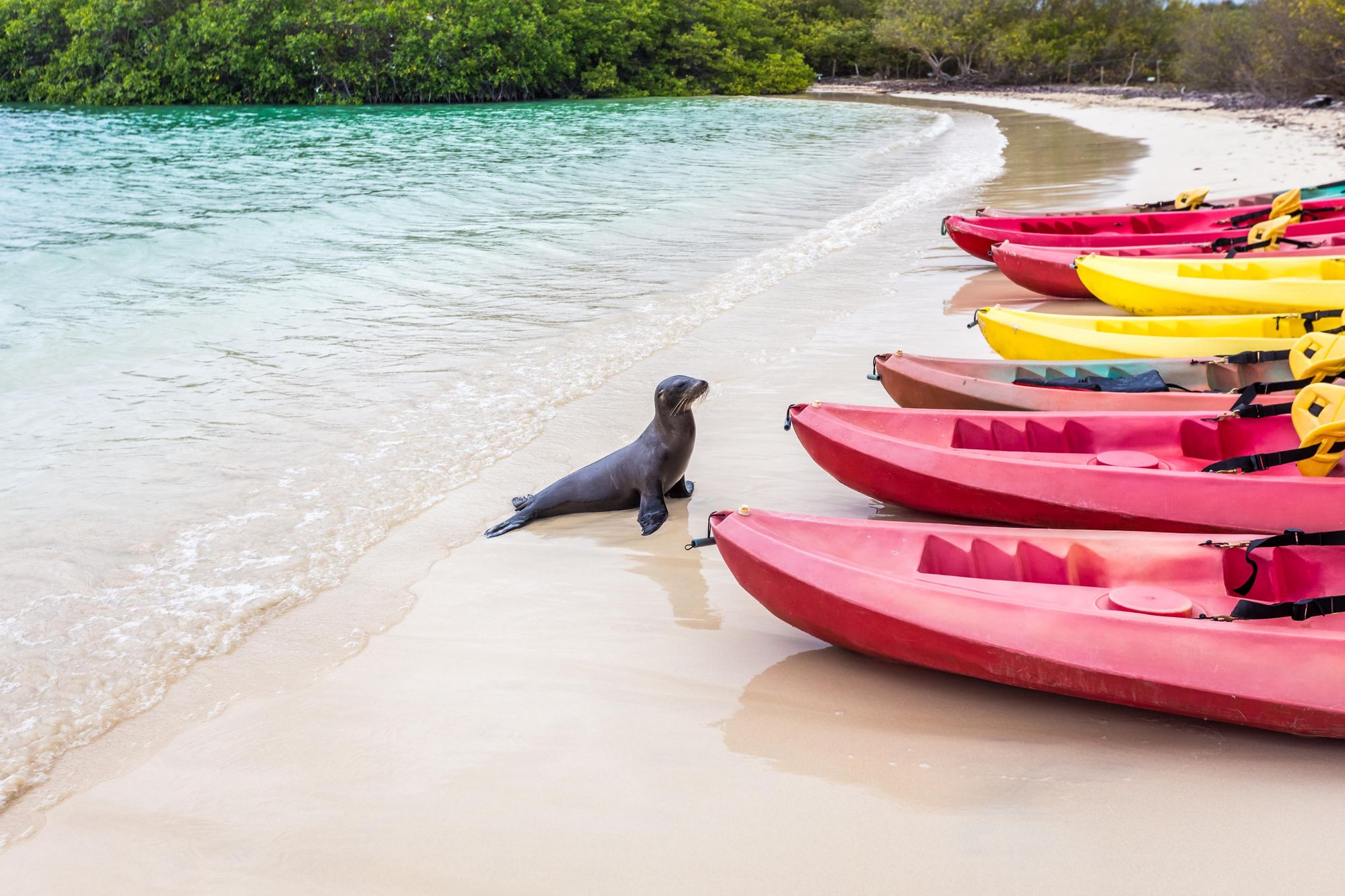
Tortuga Bay is a famous beach on Santa Cruz Island, ideal for everything from sunbathing to snorkelling, kayaking and wildlife spotting, as Wilson explains.
“This stunning white sand beach is considered by many to be the most beautiful in the Galapagos Islands,” he says. “The beach can be reached via a marked and cobblestoned four mile (6.5km) path, and there is excellent bird watching along the way, with plenty of Darwin’s finches and other sea birds, surrounded by Galapagos vegetation.
“Beyond the immediate stretch of the beach, there is a calmer spot, perfect for active visitors; it is an ideal place to kayak, swimming, splashing around, tanning, and relaxing in the shade of the surrounding mangrove trees. In this spot, you can find marine iguanas, finches, blue-footed boobies, pelicans, sharks, sea turtle, rays, and more.”
8. Visit Isabela Island and snorkel on Tintoreras Islet
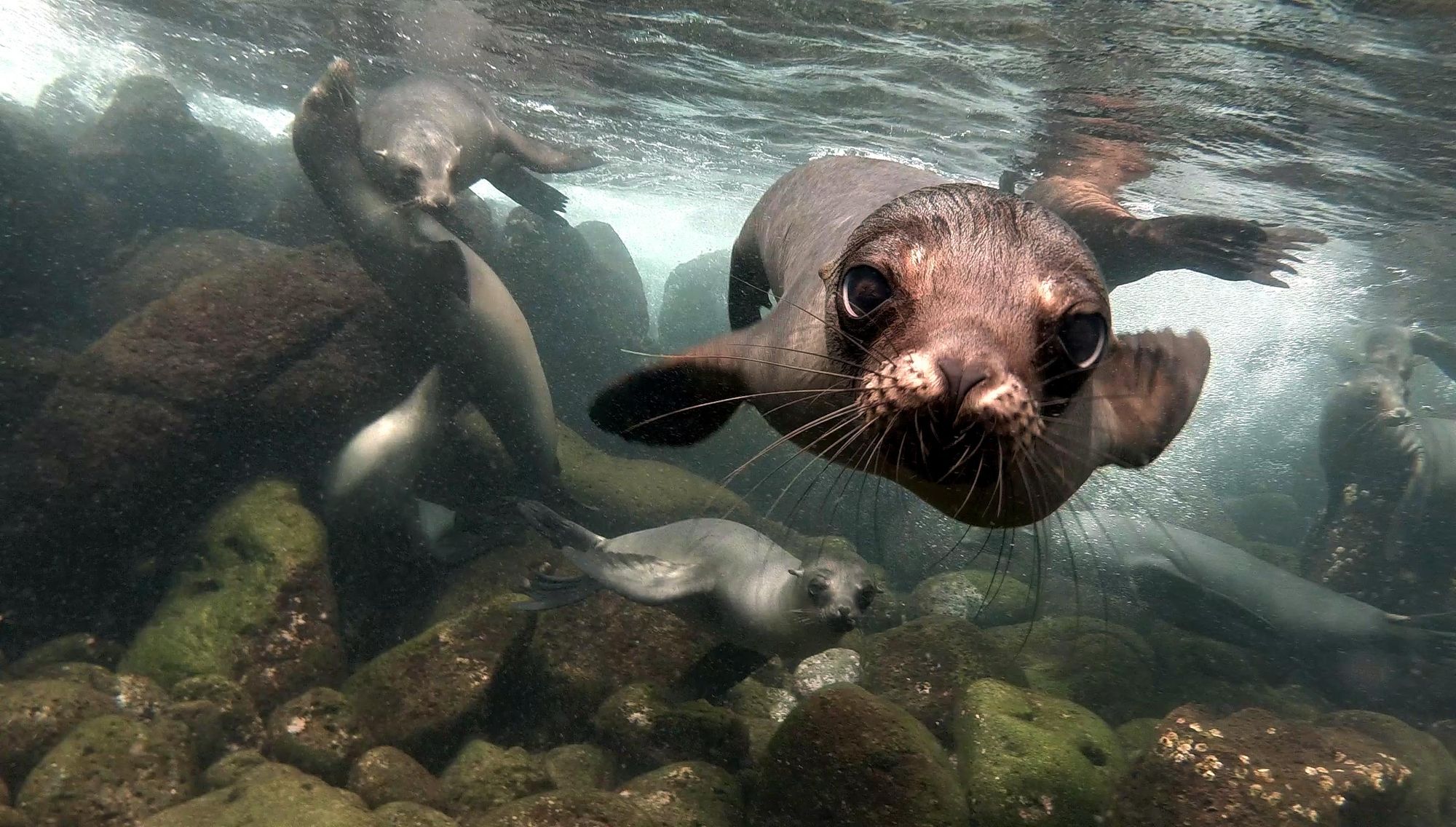
The Las Tintoreras Islet sits to the south of the bay of Puerto Villamil, on Isabela Island.
“The Tintoreras are called that because there is a lava crevice that contains water where the whitetip sharks called 'tintoreras' rest,” says Wilson. “They can be admired comfortably in the mornings and afternoons. You have to travel in a boat to get to Tintoreras, but the access is easy. It takes about 10 minutes from the dock of Villamil.
“This natural wonder is surrounded by endemic species such as sea lions, penguins, blue-footed boobies, pelicans, rays and marine iguanas that have made this small bay their permanent rest home - and it is a good spot to snorkel and to share with these amazing creatures.”
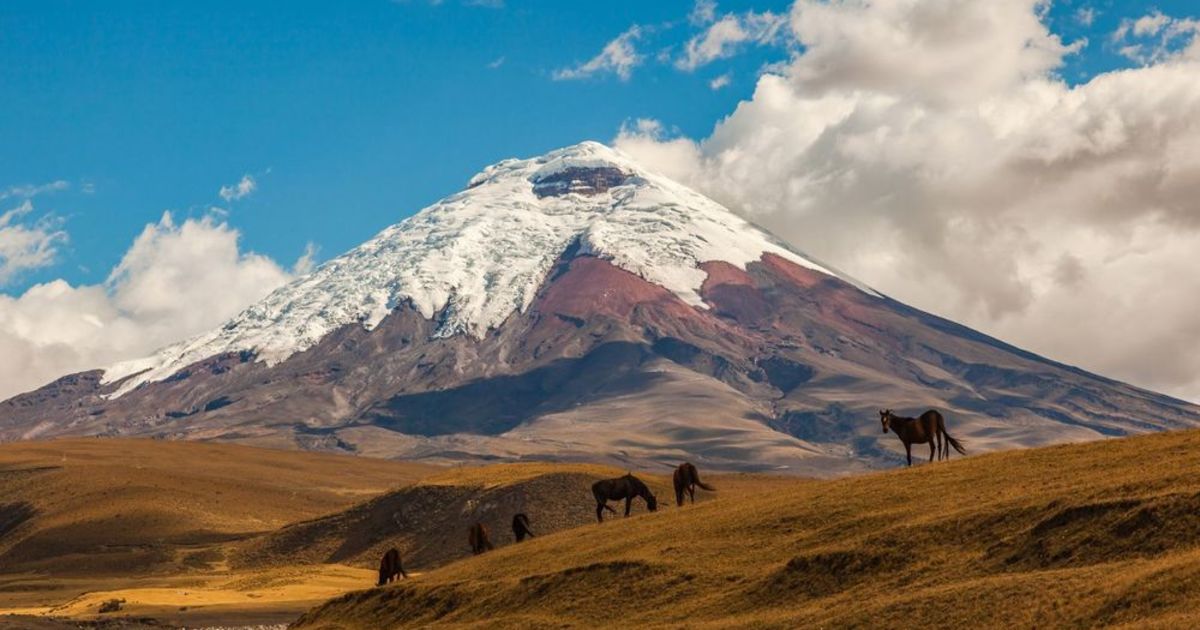
Isabela “is one of the best places for snorkelling on the Galapagos,” Henry adds.
“For a little bit of adventure, and to add a few more animals to the list - go to Isabela. I love its remoteness - only 2,000 people live there, and most of the hotels are in front of the water, right on the beach. You feel that you're in the middle of nowhere, but it’s actually the largest island in the Galapagos and one of the most active volcanically.
“You can see flamingos and penguins here. You’ll never find a penguin in Santa Cruz.”
9. Cycle to the Wall of Tears on Isabela Island
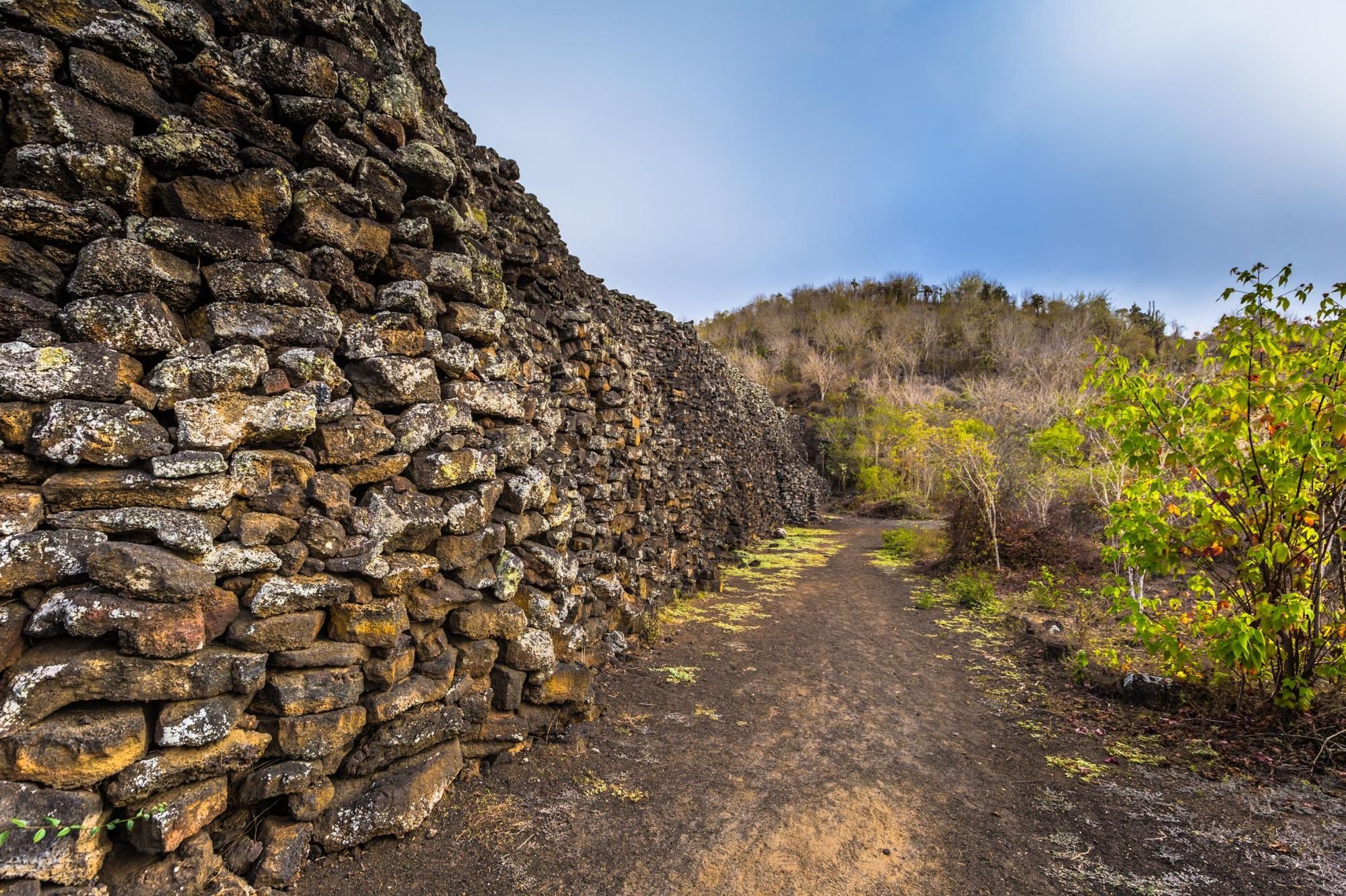
Don’t leave Isabela Island without visiting the Wall of Tears, a former penal colony which sits three miles (5km) west of Puerto Villamil, and which tells the dark, recent history of the island.
“The Wall of Tears or ‘Muro de las Lagrimas’ is an infamous 10-metre high wall constructed in volcanic rock,” Wilson explains. “It is a sad memory of the history of Isabela. Between the years of 1946 and 1959, the island was a colonial jail, where the prisoners were forced to build this rock wall as punishment. It was later called the Muro de Las Lagrimas (Wall of Tears) for the large number of convicts who lost their lives in its construction. It was thought that the goal of the wall was to distract the convicts from their loneliness and isolation.”
Today, it’s a regularly visited tourist site - and the scenery on the cycle out to the site stands in stark contrast to the history. “You’ll enjoy some of the most diverse and beautiful views in the Galapagos,” says Wilson. “We get to the white sandy beaches, mangroves, the salty lakes, and lava tunnels. This zone is full of giant tortoises, flamingos, and other birds.” Indeed, at the nearby Arnaldo Tupiza Breeding Centre you can see five different species of giant tortoise.
10. Hiking Sierra Negra Volcano on Isabela Island
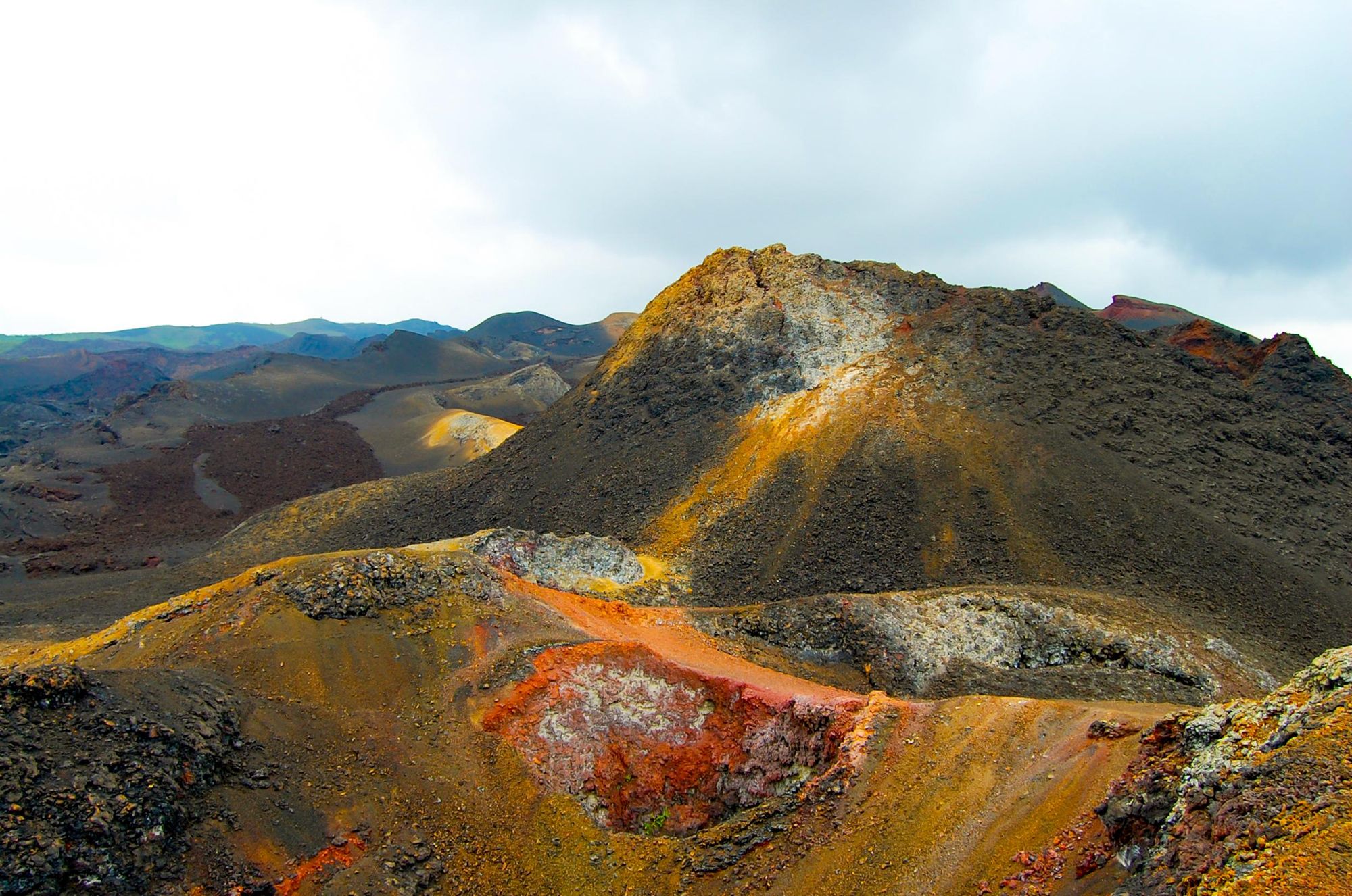
“Isabela is the only island where the volcanoes are active,” says Henry. “There are some areas where you can actually see smoke coming out. But everything is very well monitored. It’s on Isabele where you can hike the Sierra Negra volcano."
Wilson expands: “It’s not to be missed for geology lovers and adventure seekers. Since its last eruption in 2018, the geographically unique Sierra Negra Volcano has been home to incredible lava paths adorned with the local plant and animal life.”
As you reach the volcano, you’ll notice the lush scenery around you transforming.
“There is an evident change of scenery as you get closer to the highlands, from volcanic dryness with black soil and little vegetation to a humid forest with local and foreign plants introduced into the environment,” Wilson notes. “Sierra Negra is an excellent place for birdwatching - finches and "curracas" among many others. There are two paths to take, depending on the stamina of the group. One is a circuit and the other path is a straight route to the Chico Volcano with multi-coloured lava. You feel you are walking on Mars.”

11. Explore the Beauty of Bartolome Island
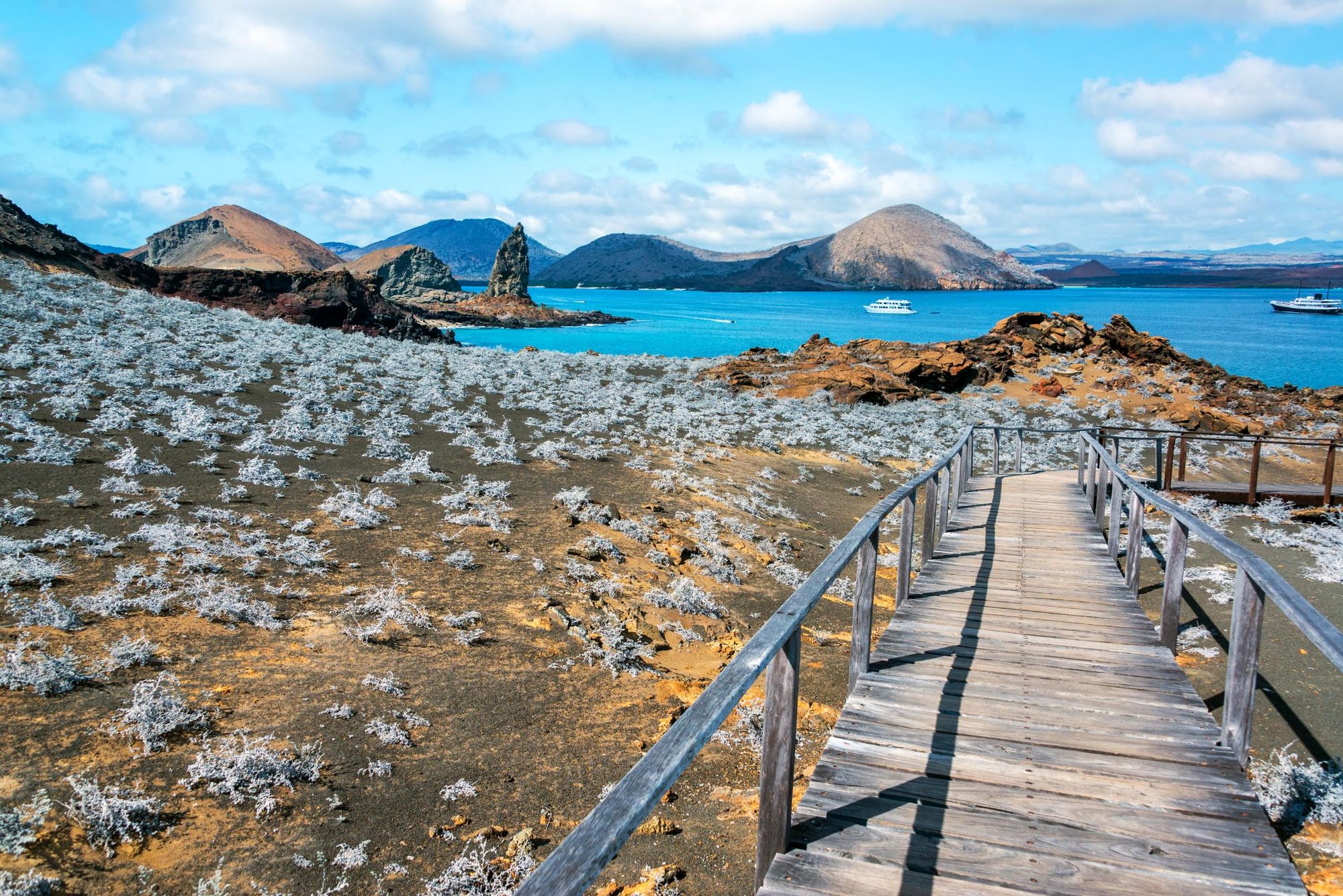
One of the most scenic islands in the Galapagos archipelago is Bartolome Island. Named for the naturalist Sir Bartholomew James Sullivan, a friend of Darwin who also worked on the HMS Beagle, this tiny island measures just half a square mile (1.2 square kilometres), but a quick visit will let you hike to some incredibly scenic, 360-degree viewpoints. You can look back over the Pinnacle Rock seastack and beyond. This is a really popular spot, though, so expect some crowds.
This is a particularly great place to spot the Galapagos penguin, and the sea life in the surrounding waters includes sea lions, sea turtles and white-tipped reef sharks.
When is the best time to visit the Galapagos Islands?
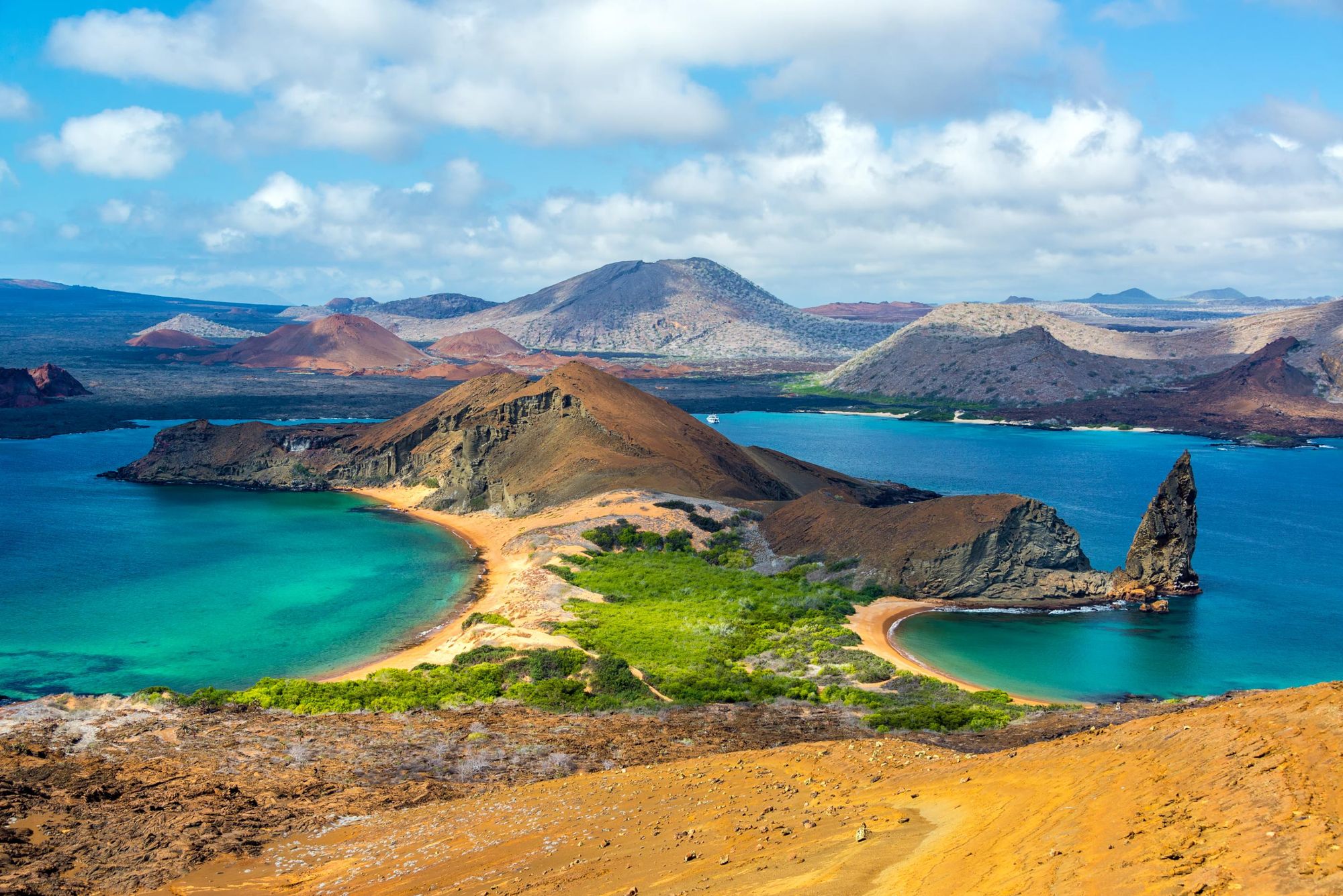
The Galapagos Islands are a year-round destination, Wilson explains. “There are different times of year to see and do different things, but the whole year is great in the Galapagos Islands. Because Galapagos is near the equator, it has a year-round temperate climate with two distinct seasons: a hot season from December through May and a slightly cooler dry season from June through November.”
To give you an idea, the average daily high temperature during the hot season is 28-30°C (83-86°F), while the average during the cooler season is 24-25°C (76-77°F).
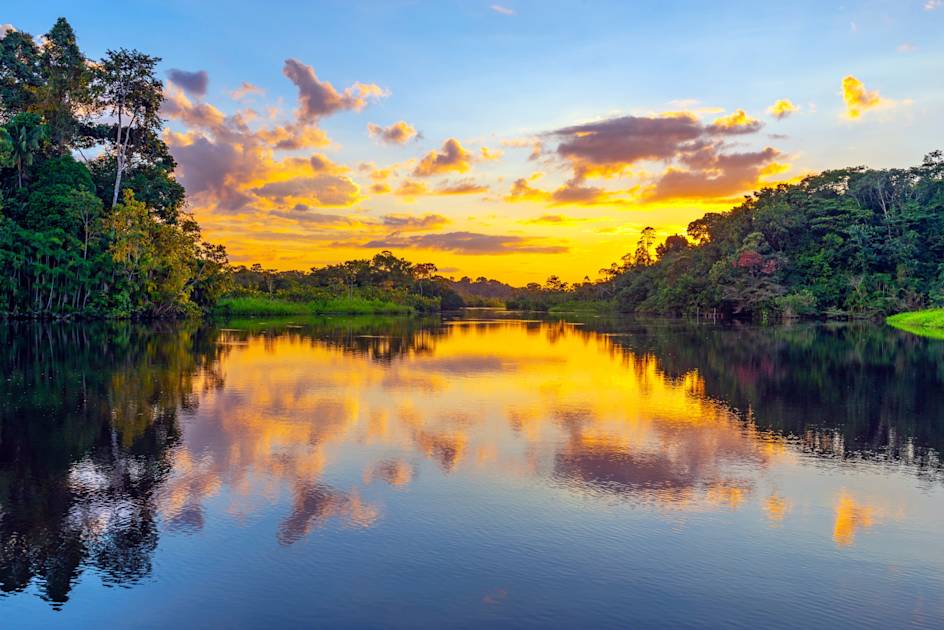
“In each season, diving conditions or the animal behaviour will vary from month to month,” Wilson continues. “For example, in August the Galapagos penguins migrate to the central islands because of cold temperatures. Many other animal behaviors will also depend on the month of the year. The Galapagos is a pulsating archipelago offering a diverse environment for animal mating and reproduction cycles, migration habits, as well as hatching conditions.”
Do all visits to the Galapagos National Park require a guide?
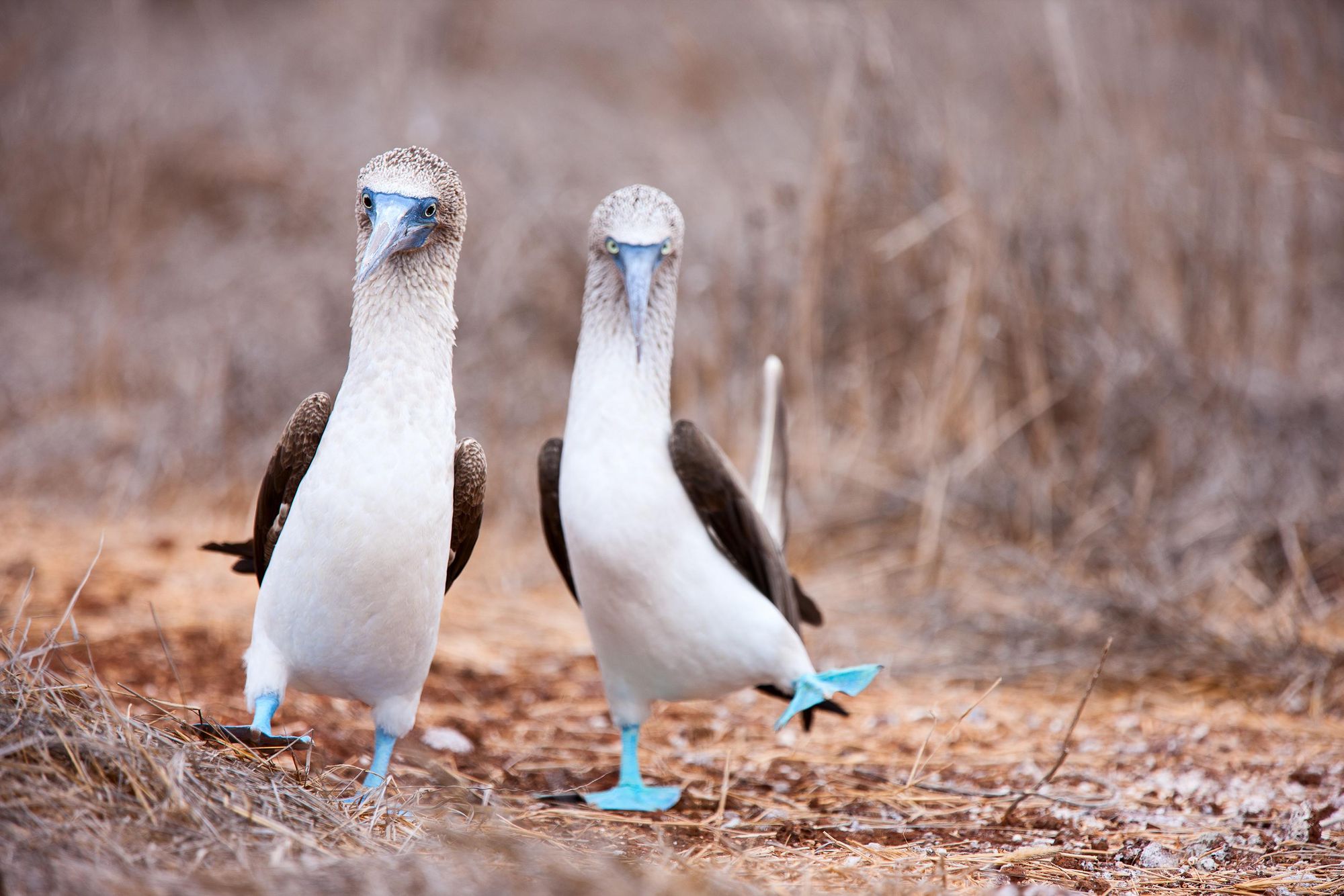
Since 1975, all visitors to Galapagos have been required to be accompanied by a certified naturalist guide. “These men and women are a key component in the management of the Galapagos National Park,” says Wilson. “They not only share their knowledge with visitors, but also act as the eyes and ears of the park service, enforcing rules and notifying the park service about introduced species, trails that need maintenance and so on.
“The Galapagos guides come from a variety of backgrounds, and all must take and pass the official guide course. Even though their presence is mandated by the park service, many visitors find that their Galapagos guide is an important part of their overall Galapagos experience.”
Are the Galapagos Islands safe?
You don’t have to worry about safety on the Galapagos Island. As Henry Sisa explains: “In the Galapagos there’s very little crime. There's only a population of 32,000 spread across four islands. People can just leave their bikes unlocked on the streets. It's super safe.”
Inspired? Check out our adventures in the Galapagos Islands now!

